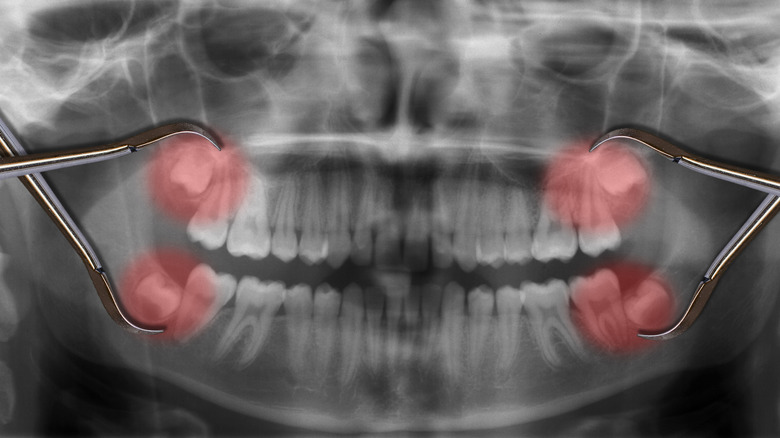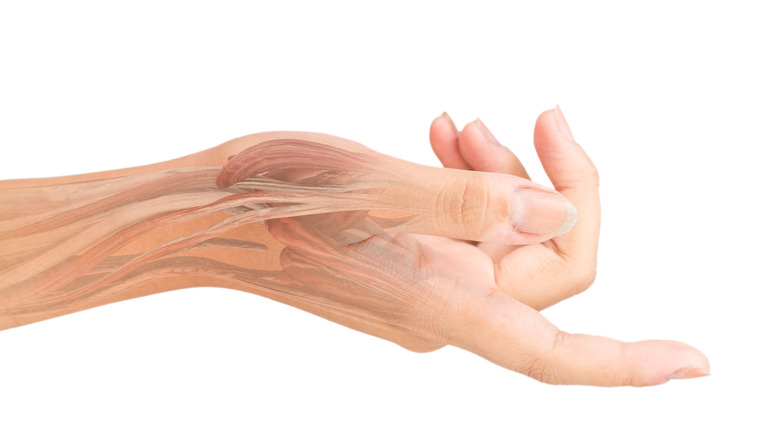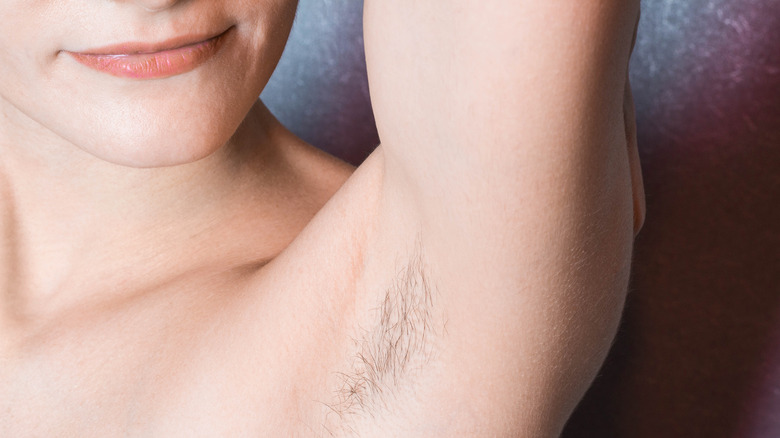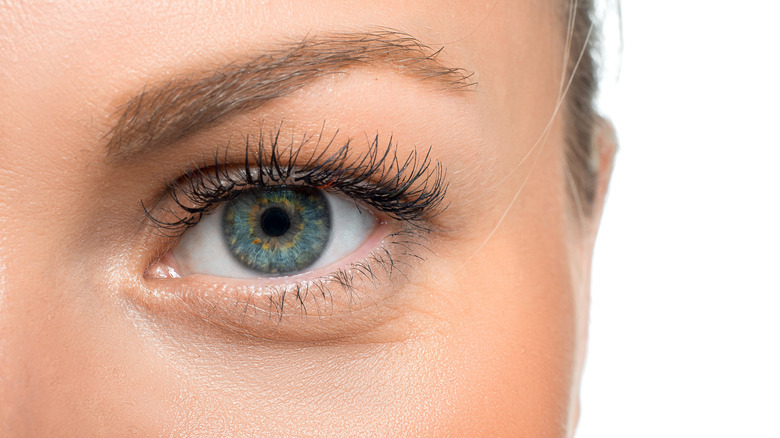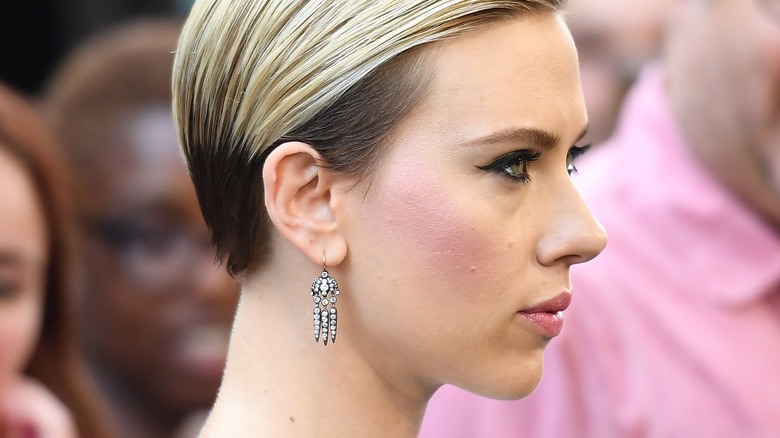Human Body Parts We No Longer Need
Human body parts are pretty remarkable. Makes sense given as how our body contains more atoms than you can count: 7 octillion. Yes, that's really a number. Your body also has some 37 trillion cells. If you were to unravel the DNA in those cells, it would stretch from where you are now to Pluto — and then back again.
Need more proof of your amazingness? Your eyes can see between 2.3 and 7.5 million colors whereas your nose can distinguish a trillion different kinds of smells. Yes, we're pretty impressive creatures. Although you may not know what each of your cells and atoms are up to at any given time, you certainly recognize their importance.
Each and every part of your body is important, right? For example, without your tiny little pinky finger — the seemingly least useful digit — your hand would lose half of its strength. Still, there are parts of your body that are far less important than your smallest fingers. In fact, science tells us that there are body parts you don't even need. Here's just what you could live without.
Wisdom teeth are human body parts that can cause more trouble than they're worth
Of all of the useless human body parts, third molars (aka wisdom teeth) are probably the ones that've caused you the most strife. According to the American Association of Oral and Maxillofacial Surgeons (via NCBI), about 85 percent of people will need their wisdom teeth removed. In 2007, it was estimated that 5 million wisdom teeth extractions were performed annually in the United States alone. These surgeries make for $3 billion each and every year.
Although wisdom teeth may only seem useful for lining the pockets of oral surgeons and giving us an excuse to eat mashed potatoes for a week, they were once helpful. Robert Corruccini, an anthropologist at Southern Illinois University, told New Scientist that wisdom teeth didn't become useless until humans' diets changed to become "softer and more processed." When that happened, our molars were being used less and less — which led to overcrowding. Corruccini explained, "So the third molars, the last teeth to erupt, run out of space to erupt."
What was the appendix good for as a human body part?
Although you were more than likely born with an appendix, you don't need this human body part to survive. In fact, one in 20 people will experience appendicitis in the United States and will need to undergo surgery, an appendectomy, to have their appendix completely removed.
Despite being "the most commonly known useless organ," according to Business Insider, the appendix isn't totally and completely useless. In a news release provided to WebMD, William Parker, assistant professor of experimental surgery at Duke University Medical Center in North Carolina, revealed that "the abundance of circumstantial evidence makes a strong case for the role of the appendix as a place where the good bacteria can live safe and undisturbed until they are needed."
Nevertheless, it is thought that the appendix was more useful when humans relied on a more plant-rich diet. "As we started switching to a more diverse diet and targeting meat, we didn't need super long and complicated intestinal tracts anymore," Dorsa Amir, an evolutionary anthropologist at Boston College, told Business Insider.
You've never heard of this little human body part
Although you can likely name the major organs in your body, you probably don't realize that you have a little human body part called the vomeronasal organ, or the VNO. According to New Scientist, this organ "consists of a pair of structures that nestle in the nasal lining or the roof of the mouth." If you didn't know you had it, it's okay. It doesn't do anything for you anyway.
In rodents and some mammals, the VNO serves to detect pheromones. While most adult humans have a VNO of sorts, it doesn't work in the same way. Well, it actually doesn't work at all. Michael Meredith, a neuroscientist at Florida State University, explained to the publication, "If you look at the anatomy of the structure, you don't see any cells that look like the sensory cells in other mammalian VNOs. You don't see any nerve fibres connecting the organ to the brain." Essentially, the organ is there, but it's not hooked up.
Only some people have this human body part
Ready for an experiment? While resting the back of your wrist and forearm against a table, squeeze together your thumb and pinky. Do you see a muscle appear in the center of your wrist? Don't freak out if you don't. Around 10 percent of the human population do not have this muscle called the palmaris longus, as noted by Encyclopedia Britannica. While that means most of us do, indeed, have the muscle, not one of us needs this human body part. Well, unless you want to be really great at climbing trees.
"It's been a while since it was useful," Dorsa Amir, an evolutionary anthropologist at Boston College, told Business Insider. While some believe it helped humans to grip and climb, a person's grip strength does not depend on whether they have the palmaris longus muscle or not. This muscle is actually most useful when it's taken from the arm and used elsewhere. "Today, the palmaris longus is commonly harvested as a source of tissue for tendon grafting in reconstructive surgery," the Encyclopedia Britannica revealed.
The tailbone is a human body part that offers some function but not much
If you don't have a tail, do you really need a tailbone? Although most people aren't born with tails, you did actually have one in the womb. "In the sixth week of gestation, the human embryo possesses a tail, complete with several vertebrae," Encyclopedia Britannica revealed. "In the next couple weeks of development, however, the tail disappears, and over time the vertebrae fuse to form the coccyx, or tailbone, in the adult."
Despite losing that tail in development, what's left of the human body part can still be useful. According to Spine-health.com, the tailbone helps a person remained balanced and stable while sitting down. "The tailbone is the connecting point for many pelvic floor muscles," the site continued. "These muscles help support the anus and aid in defecation, support the vagina in females, and assist in walking, running, and moving the legs." Although the coccyx definitely sounds helpful, science categorizes it as rudimentary. As Spine-health.com explained, it is "vestigial (or no longer necessary) in the human body."
This human body part is considered the floppy disk of the male anatomy
In the United States, the majority of male newborns are circumcised shortly after being born, the Centers for Disease Control and Prevention reports. Considering circumcision is the standard, foreskin is obviously not considered to be a "necessary" human body part.
"When a product slips in status from 'must have' to 'don't need,' it is generally tossed on the scrapheap of consumer history. Just ask the people who invented the floppy disk," wrote Roger Collier in the Canadian Medical Association Journal (via NCBI). "According to some health experts, the foreskin is the floppy disk of the male anatomy, a once-important flap of skin that no longer serves much purpose."
Although some medical professionals still believe that foreskin "serves important protective, sensory and sexual functions," as Collier highlighted in his article, others advocate for circumcision. Minh Dinh, assistant professor in medicine–infectious diseases at Northwestern University in Chicago, noted to the publication, "There are no health benefits to having foreskin," adding, "Not that I'm aware of."
These human body parts are responsible for goosebumps but we don't need them
When you're cold, scared, or even nostalgic, you may find your skin covered in goosebumps. Muscle fibers called arrector pili, which are influenced by adrenaline, cause this to happen. And humans aren't the only ones who go through this. If you've ever seen your dog or cat's fur stand upright when it spots something it deems threatening — be it the mailman or a bird — their arrector pili are at work.
"These bumps are caused by a contraction of miniature muscles that are attached to each hair. Each contracting muscle creates a shallow depression on the skin surface, which causes the surrounding area to protrude," George A. Bubenik, a physiologist and professor of zoology at the University of Guelph in Ontario, explained in an article for Scientific American.
In animals, that process can help retain heat and make an animal appear larger and thus more threatening, but in people the "reaction is useless because we do not have a hair coat," according to Bubenik. Despite not serving much of a purpose at all, we continue to get goosebumps.
Armpit hair may have been a human body part used for mating
After the umpteenth time of shaving your armpits, you've got to wonder why we even have hair there to begin with. The leading theory has to do with attracting a mate. "Different people make different odors, and believe it or not, odor is an attraction to the opposite sex," Shani Francis, board-certified dermatologist and clinical assistant professor at the University of Chicago Pritzker School of Medicine, told Health. "It's nasty," the doc opined, "but it's cool!"
Of course, you may not be all that concerned with attracting a mate and don't want to waft your armpits around to attract attention. While armpit hair is no longer a necessity, it's not likely to go away anytime soon. "Assuming that there is an evolutionary advantage of attracting a genetically compatible mate," Francis explained, "then underarm hair is likely to remain!" Whether you choose to remove it or embrace it, though, is entirely up to you.
Outer ear muscles are pretty useless human body parts
Can you wiggle your ears? If you can, that's thanks to your auricular muscles — the muscles of your outer ear. Even if you can't, though, you still have these human body parts. Compared to other mammals — and the few of you ear-wigglers out there — our ears are pretty one-dimensional. While some mammals are able to locate sounds and decipher emotion with their ears, we, uh, merely hear sounds with our ears.
Okay, okay, that is a bit of an oversimplification. Our ears can analyze sounds while also controlling our equilibrium and coordination. There's no arguing that ears are useful and beneficial parts of the human body. Nevertheless, our outer ear muscles have been rendered essentially useless. Because these muscles don't help us to pinpoint sounds like they do for other mammals, it is thought that humans turn their heads to compensate for our nonfunctioning auricular muscles, Encyclopedia Britannica explained. Even those who can wiggle their ears, the "auricularis posterior reflex" still isn't strong enough to physically move the ear, Steven Hackley, a psychologist at the University of Missouri, told Live Science. Ear-wiggling, it seems, is but a party trick.
There's not much need for tonsils as human body parts
In decades past, having your tonsils removed was more like a rite of passage than it was a surgical operation. Since the '70s, though, the number of tonsillectomies performed in the United States has "declined significantly and progressively," according to the American Academy of Otolaryngology — Head and Neck Surgery.
Tonsils are part of the lymphatic system and do serve a purpose in fighting off infection. "Your oral cavity is an entryway to your body, so immune cells in your throat can help you fight respiratory infections," Daniel Lieberman, professor of human evolutionary biology at Harvard University, informed Men's Health.
However, frequent infections can cause these human body parts to become enlarged and can affect a person's breathing. In these cases, a tonsillectomy is still advised. Healthy tonsils are, of course, useful. After all, they're lymph nodes. That said, they're not your only lymph nodes. It's because of this that it's possible to live a healthy life without them.
This abdomen muscle isn't much of a human body part
Chances are, you have what's called a pyramidalis muscle. Encyclopedia Britannica describes this human body part as "a paired, triangular-shaped muscle that, when present, is located in the lower abdomen between the muscle and muscle sheath of the rectus abdominis." Did you catch that? "When present."
While about 80 percent of people worldwide are thought to have this muscle, a minority of people don't. Additionally, some people have more than one pyramidalis muscle. From person to person, the muscles vary not only in number, but also in size. These muscles may "contract the linea alba" — a fibrous part of the stomach — but this is "an activity that is considered irrelevant to the function of the abdominal muscles," according to Encyclopedia Britannica.
While useless, you may be curious to know if you have the muscle — or muscles, as the case may be. However, Reader's Digest reported that you wouldn't be able to tell without special imaging or surgical inspection like exploratory surgery. And, uh, don't do that.
We don't need this part of our eyes as a human body part
If you've ever caught a glimpse of your dog's third eyelid, it's a creepy sight. When a dog's third eyelid, or nictitating membrane, closes across his eye, it looks like "his eye is rolling back in his head," Animal Planet explained. "In fact, sometimes when he sleeps, the upper and lower eyelids open making it appear he has all white eyeballs because the third eyelid is closed."
Deborah S. Friedman, veterinarian and diplomate with the American College of Veterinary Ophthalmologists, explained that a nictitating membrane is like a "windshield-washer" for the cornea, clearing "debris and mucus." A third of a dog's tears are also produced by it, and the third eyelid as a whole can protect the dog's cornea from injury. It even works like a lymph node and helps fight infection.
In addition to dogs, other mammals, reptiles, and birds have third eyelids. You may be surprised to learn that you, too, have a third eyelid of sorts: the plica semilunaris (via Gizmodo). However, this human body part is immovable and only covers the inside corner of the eyes, rendering it pretty useless.
Darwin's tubercle has no real point as a human body part
During the sixth week of gestation, tissue begins to form the ear canal and, eventually, the outer ear. In some people, a human body part called a tubercle — aka Darwin's point or Dawin's tubercle — begins to form, as explained by New Scientist. Technically a malformation, it resembles a bump on the rim of the outer ear.
A Darwin's point is completely benign, and, while it can be surgically removed, there's no medical reason for doing so. Anthony Sclafani, a surgeon at the New York Eye and Ear Infirmary, further explained to New Scientist that the malformation is genetic. Because a person only needs to inherit one of the genes for a Darwin's point to develop, it's assumed that it may have had a purpose at some point.
A Darwin's point may neither be harmful nor useful anymore — and thus useless — but some people still have them. According to a 2016 study, a Darwin's point has been found in 10.5 percent, 40 percent, and 58 percent of Spanish, Indian, and Swedish populations, respectively. You may have even noticed that Scarlett Johansson appears to have this "unique congenital anomaly."

